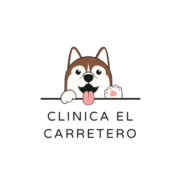As a dedicated World of Warcraft Classic player, I’ve spent countless hours mastering the Hunter class and its pet training system. Managing pet training points effectively can make or break your hunting experience in Azeroth. Understanding how pet training points work in WoW Classic is crucial for maximizing your Hunter’s potential. Unlike retail WoW, Classic’s pet system requires careful planning and strategic point allocation. I’ll guide you through the essentials of pet training points, from basic mechanics to advanced optimization strategies that’ll help you dominate both PvE and PvP content.
- Pet training points are a vital system in WoW Classic, with pets receiving 1 point per level up to a maximum of 55 points at level 60
- Core abilities like Growl, Bite, and Dash should be prioritized when spending training points, with careful consideration for both active and passive skills
- The most effective pets for hunters include Broken Tooth for spell interruption, Winterspring Owl for nature resistance, and The Rake for early leveling
- Pet trainers can be found in major cities, with Thunder Bluff and Ironforge serving as primary training hubs for Horde and Alliance respectively
- Focus management is crucial – maintaining 20-25 focus points and using abilities strategically ensures optimal combat performance
- Pet happiness directly impacts DPS and focus regeneration, with happy pets dealing 25% more damage and regenerating focus 25% faster
Pet Training Points WoW Classic
Pet training points form the foundation of pet customization in WoW Classic, enabling hunters to enhance their companions’ abilities. The system operates on a finite pool of points that must be strategically allocated across various skills.
How Training Points Work
Pet training points unlock at level 10 when hunters first tame a beast. Each pet level grants 1 training point, with pets starting at the hunter’s level minus 5. Training points distribute across three categories:
- Spend points on active abilities like Bite Claw or Growl
- Allocate points to passive skills such as Armor or Stamina
- Remove allocated points at pet trainers for 10 silver per point
Maximum Training Points Available
The total training points available correlates directly with pet level:
| Pet Level | Maximum Training Points |
|---|---|
| Level 10 | 5 points |
| Level 30 | 25 points |
| Level 50 | 45 points |
| Level 60 | 55 points |
- Basic abilities: 1-2 points
- Advanced abilities: 3-4 points
- Elite abilities: 5-6 points
Best Pets for Hunter Class
I’ve found that selecting the right pet significantly impacts a hunter’s performance in World of Warcraft Classic, with each beast type offering unique advantages for different situations.
Beast Mastery Specialization Benefits
Beast Mastery specialization enhances pet capabilities through specific talents:
- Bestial Swiftness increases pet movement speed by 30%
- Ferocity adds 21% damage to pet attacks at max rank
- Bestial Discipline improves focus regeneration by 50%
- Frenzy grants up to 30% attack speed after critical strikes
- Intimidation provides a 3-second stun for crowd control
| Talent Level | Focus Bonus | Damage Increase |
|---|---|---|
| Level 20 | 20% | 10% |
| Level 30 | 35% | 15% |
| Level 40 | 50% | 21% |
- Broken Tooth (Badlands, Level 37) – 1.0 attack speed for spell interruption
- Winterspring Owl (Winterspring) – 10% nature resistance buff
- Rake (Mulgore, Level 10) – Fast attack speed ideal for early leveling
- The Rake (Mulgore, Level 10) – Unique attack speed of 1.2
- Deathmaw (Burning Steppes) – High armor values for tanking
| Pet Type | Primary Use | Notable Abilities |
|---|---|---|
| Cat | DPS | Claw, Dash |
| Owl | PvP | Screech |
| Wolf | Group | Furious Howl |
| Bear | Tank | High Health |
| Boar | Solo | Charge |
Spending Training Points Efficiently
Training points allocation determines your pet’s combat effectiveness in WoW Classic. I’ve developed strategies for maximizing these points through extensive testing with various pet builds.
Essential Pet Abilities to Unlock
Core abilities form the foundation of any pet build:
- Growl (Rank 1): Costs 1 point to enable threat generation
- Bite (Rank 4): Requires 4 points for consistent damage output
- Dash (Rank 2): Allocate 2 points for enhanced mobility
- Natural Armor (Rank 3): Invest 3 points for baseline survivability
- Stamina (Rank 3): Add 3 points to increase pet health pool
| Ability Level | Training Points | Cumulative Cost |
|---|---|---|
| Rank 1 | 1 point | 1 |
| Rank 2 | 2 points | 3 |
| Rank 3 | 3 points | 6 |
| Rank 4 | 4 points | 10 |
- Claw (Rank 4): Supplements DPS rotation for carnivorous pets
- Screech (Rank 2): Reduces enemy attack power in group content
- Great Stamina (Rank 4): Boosts survivability for PvP encounters
- Fire Resistance (Rank 2): Essential for Molten Core raiding
- Arcane Resistance (Rank 2): Valuable for battleground encounters
| Skill Type | Focus Cost | Training Points |
|---|---|---|
| Active Abilities | 20-35 | 4-8 |
| Passive Skills | 0 | 2-4 |
| Resistances | 0 | 2-3 |
Pet Training Locations in Azeroth
Pet trainers in World of Warcraft Classic are scattered across major cities and settlements, offering essential services for hunters to manage their companions’ abilities. I’ve mapped out the most accessible locations for both factions based on level ranges and geographical convenience.
Alliance Training Spots
- Goldshire in Elwynn Forest (coordinates: 32, 54) provides the earliest access to pet training for night elf and human hunters
- Darnassus in Teldrassil features 2 trainers: one in Cenarion Enclave (40, 8) and another in Craftsmen’s Terrace (63, 66)
- Ironforge houses a trainer in The Military Ward (70, 85) serving as a central hub for mid-level hunters
- Stormwind City offers training services in The Park district (61, 40) with easy access to the auction house
- Menethil Harbor in Wetlands (8, 55) serves as a convenient stop while traveling between continents
- Thunder Bluff maintains 3 trainers on Hunter Rise (54, 46) (55, 46) (55, 53) making it the primary hub for Horde pet training
- Orgrimmar features a trainer in The Valley of Honor (66, 14) near the Hunter trainer complex
- The Crossroads in The Barrens (51, 30) offers an essential early-game training location for levels 10-20
- Undercity positions its trainer in The War Quarter (51, 67) providing service to Forsaken hunters
- Camp Taurajo in The Barrens (44, 59) serves as a strategic stop for hunters traveling between Thunder Bluff and Orgrimmar
Common Pet Training Mistakes to Avoid
I’ve identified seven critical mistakes that frequently occur during pet training in WoW Classic:
- Overwriting Essential Abilities
- Accidentally removing core abilities like Growl or Bite
- Training new abilities without checking point allocation
- Forgetting to save training points for higher ranks
- Incorrect Focus Management
- Letting pet abilities drain focus too quickly
- Not monitoring focus regeneration rates
- Training multiple focus-intensive abilities
- Suboptimal Ability Ranking
- Training low-rank abilities at high levels
- Not upgrading important abilities when available
- Wasting points on abilities that scale poorly
- Resistance Training Errors
- Training wrong resistances for specific content
- Over-investing in single resistance types
- Neglecting balanced resistance distribution
- Diet Management Issues
- Not learning pet diets before taming
- Training expensive food preferences
- Missing diet training opportunities at pet trainers
| Pet Level | Available Points | Recommended Core Skills |
|---|---|---|
| 10-20 | 5-15 | Growl, Bite |
| 21-40 | 16-35 | +Dash, Claw |
| 41-60 | 36-55 | +Resistances, Stamina |
- Poor Point Distribution
- Spending points on situational abilities too early
- Not reserving points for level-specific unlocks
- Ignoring specialization synergies
- Training Location Inefficiency
- Training at incorrect level-range locations
- Missing faction-specific trainer benefits
- Not planning training routes efficiently
These mistakes impact pet performance significantly in both PvE encounters and PvP scenarios.
Best Practices for Pet Management
Focus Management Techniques
Pet focus management forms the cornerstone of effective combat performance. I’ve found that maintaining 20-25 focus points enables optimal ability usage for sustained DPS. Here’s my tested focus management approach:
- Keep Growl at rank 1 to minimize focus cost
- Toggle pet abilities based on encounter requirements
- Use Dash only when necessary to conserve focus
- Monitor focus regeneration during combat phases
Combat Positioning
Proper pet positioning maximizes damage output while minimizing threat complications:
- Position pets at a 45-degree angle from the target
- Maintain line of sight between pet and target
- Use Stay command for precise placement
- Keep pets away from AoE damage zones
Health and Happiness Monitoring
Pet performance correlates directly with happiness levels:
| Happiness Level | DPS Impact | Focus Regeneration |
|---|---|---|
| Happy | +25% | +125% |
| Content | +0% | +100% |
| Unhappy | -25% | +75% |
Pet Recovery Strategies
I’ve developed these efficient recovery methods:
- Use Mend Pet between pulls
- Keep pet food matched to diet preferences
- Dismiss pets during long jumps
- Revive Pet immediately after death
- Use bandages during combat healing
Threat Management
These threat control techniques optimize group dynamics:
- Start encounters with Growl active
- Adjust pet stance based on group composition
- Use Cower strategically in dungeons
- Monitor threat meters for precise control
- Coordinate with tanks for smooth transitions
Each of these management aspects requires constant attention for optimal pet performance in WoW Classic’s challenging environment.
My years of experience with pet training in WoW Classic have taught me that success lies in careful planning and execution. I’ve shared my tested strategies to help you avoid common pitfalls and optimize your pet’s performance through efficient point allocation.
Remember that mastering pet training isn’t just about following a guide – it’s about understanding your pet’s role in different situations and adapting accordingly. I encourage you to experiment with various builds while keeping these core principles in mind. Whether you’re tackling dungeons raids or engaging in PvP your well-trained pet will be your greatest asset in Azeroth.
Now it’s time to put this knowledge into practice and start your journey toward becoming an expert Hunter in WoW Classic.

